Manchester at MIPIM 2025: Day One Roundup
All of the action from Day One of Manchester at MIPIM 2025 (Tuesday 11 March 2025), where the official Manchester delegation presented the region as the UK's Growth Opportunity.
The Manchester Invest Partnership is back at MIPIM, the world’s leading property event, for 2025. This year, we’re joined in Cannes with 46 partners from across the region, including all 10 Greater Manchester Local Authorities and private sector representatives. By coming out in force together, we’re sending a strong message that Greater Manchester is full of opportunity and ready to collaborate to drive positive change.
This year Greater Manchester’s presence at MIPIM will follow the theme “Manchester 2040: Driving Productivity and Partnership with Purpose” with the strapline “Manchester: The UK’s Growth Opportunity”.

With a GDP per capita growing twice as fast as the rest of the UK in London as a leader in attracting FDI, Greater Manchester has laid solid foundations for growth. By attending MIPIM with new local leadership, enhanced devolution and a 10-year plan to drive growth across 6 strategic growth locations; Greater Manchester has all the tools at its disposal to deliver for its people, businesses and the wider UK.
Attending MIPIM is a chance to present Greater Manchester’s leading investment opportunities on a global stage, as well as drive home our mission to drive more inclusive growth across the region.
With many transformational and regeneration projects underway across the region building momentum, Greater Manchester is experiencing a real opportunity to link our growth to our places, creating jobs, great places to live and sustainable communities. MIPIM is the perfect place to show this to the world.
Here is a roundup of all of the action from Day One at MIPIM on Tuesday 11 March 2025:
Welcome Keynote
To welcome the Manchester Delegation to MIPIM and officially open the Manchester Stand for 2025, Cllr. Gavin White Executive Member for Housing and Development, Manchester City Council gave a keynote address to the delegation.
He gave an overview of the overall theme, the programme and encouraged the delegation to make the most of their time in Cannes; using the platform to network and celebrate the best of Greater Manchester’s offer.
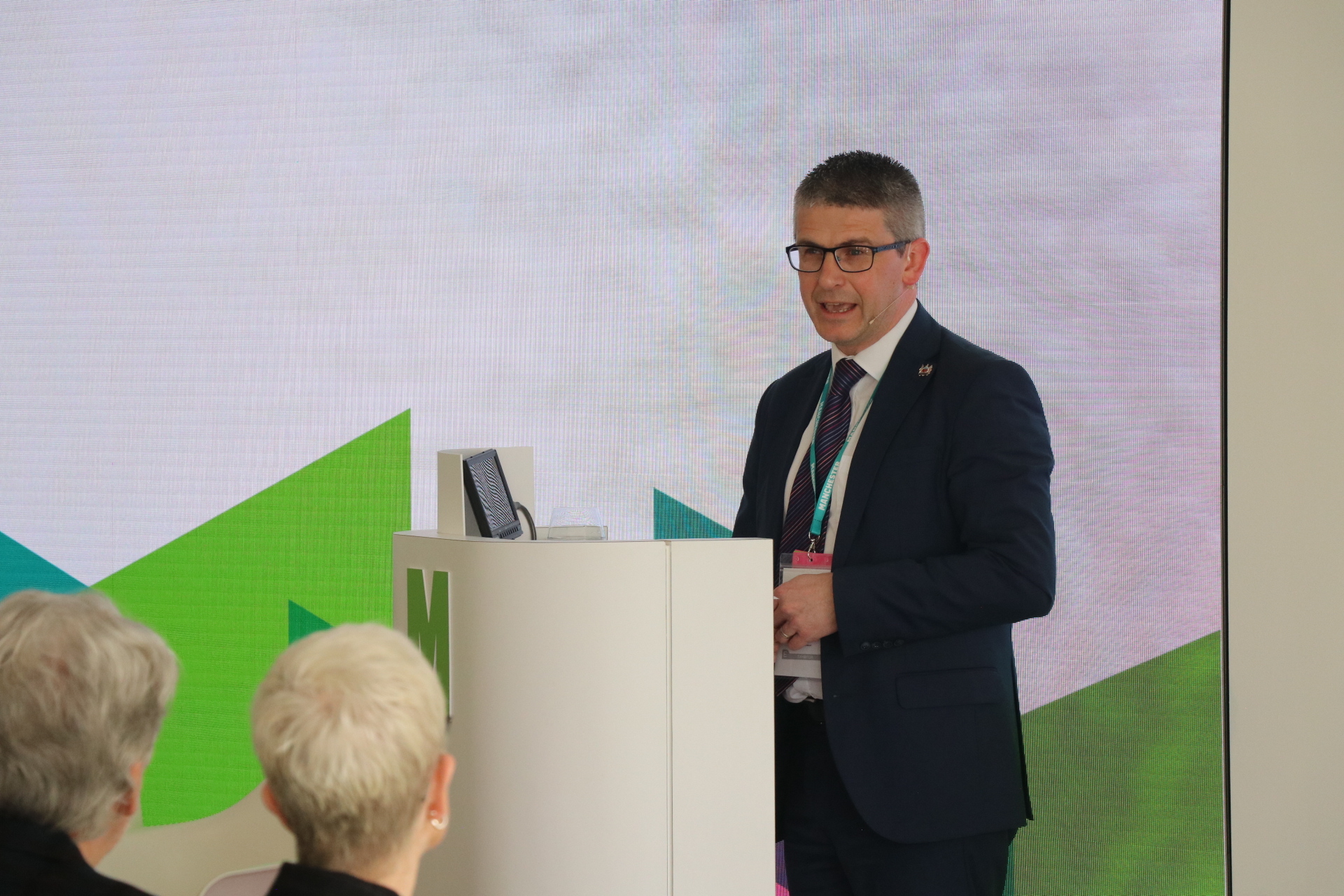
Investment Prospectus
This year, MIDAS has launched a new investment prospectus which outlines key projects and schemes in Greater Manchester’s pipeline. This prospectus will be shared with investors from around the world at the event, and gives an idea of the shovel-ready projects they can get involved with.
Manchester: Unlocking the next decade of growth
In the first panel of the day Caroline Simpson Chief Executive of Greater Manchester Combined Authority and Tom Stannard Chief Executive of Manchester City Council joined forces at the first MIPIM in each of their new roles.
The pair teamed up to discuss Greater Manchester’s plan to turbocharge growth over the next 10 years, giving an overview of the growth locations, integrated investment pipeline and large-scale opportunities it presents for the region.
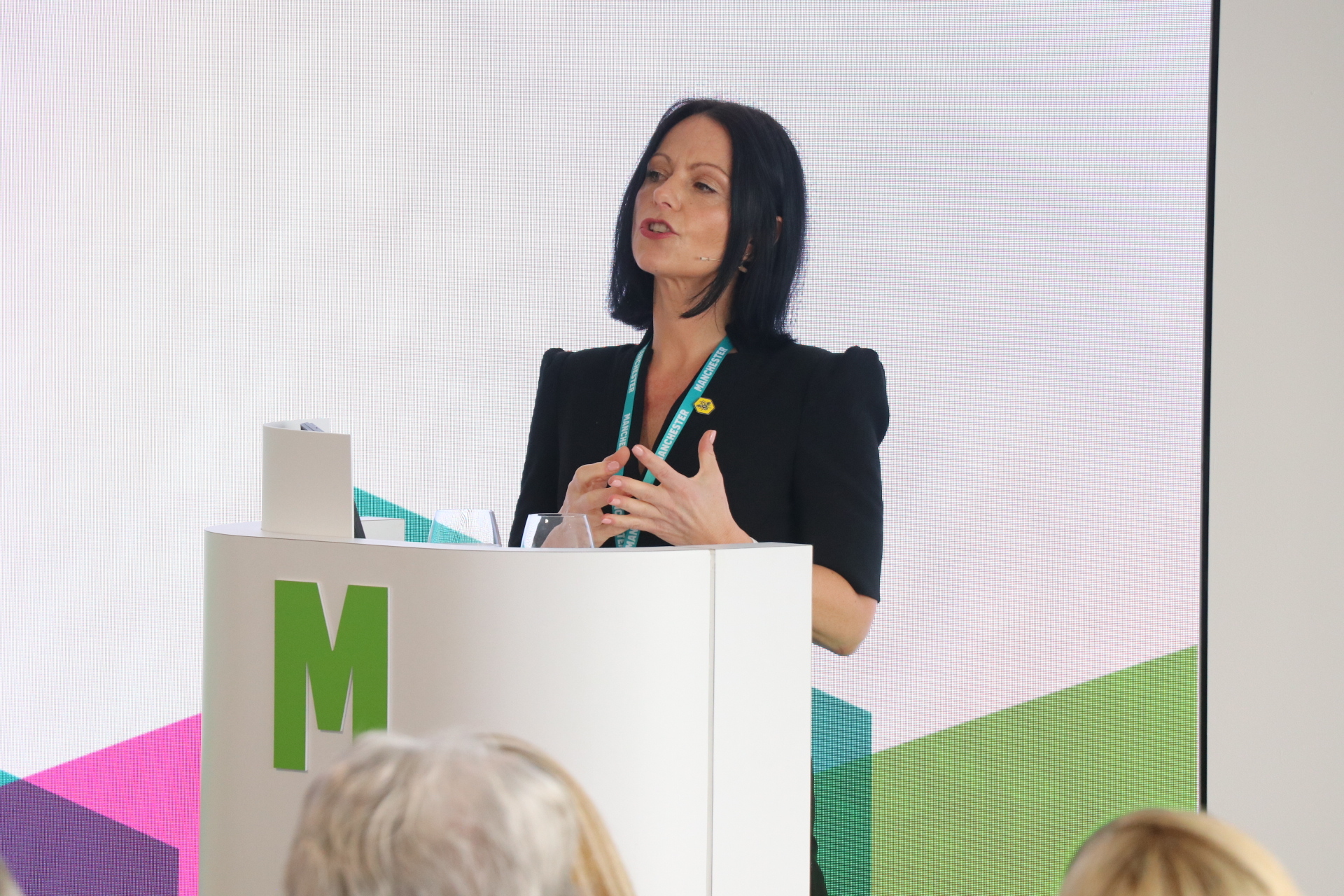
Caroline Simpson reflected on Greater Manchester’s overall growth plan and what it will mean for the wider city-region. Highlighting how our region has grown in recent years, strengths in culture, sport, thriving economy and key sectors as well as pioneering initiatives like The Bee Network through devolved powers. She spoke on how the region’s devolution journey has made this new way of pioneering new homes and jobs a possibility, the potential of large-scale development and regeneration across the 6 growth locations and the use of innovative tools like MDCs to create a system geared towards growth.
Caroline Simpson said “Greater Manchester is really pioneering how we can bring decisions out of Westminster into our region, led by the Mayor and the 10 leaders of the council, to better align and sequence investment that meets the needs of our place and our regional economy. We've got a way to go to really stretch the boundaries of how we can make the most of that devolution journey.
We are not done yet. Far from it. We are just getting started. So, using all of the ingredients that evidenced our success today, we want to move that into the next decade of growth. We have so much more to do. Our regional centre is thriving, but it could get bigger. There is room around the city centre in Salford for expansion further of the regional core and we need that to maintain our productivity on a UK and global stage. But more than that, we want to ensure that that growth reaches every part of Greater Manchester over the next 10 years. So we have that thriving global city center that's really driving jobs, innovation, our regional economy, but our city core is surrounded by a network of thriving towns, communities and neighbourhoods.”
And the final thing we are doing is really thinking about, how do we leverage investment to really match the needs of that pipeline. So if you think about all the availability of the devolved funds, the capability of a of a collective balance sheet of 10 authorities, the CA and and our transport authority, is huge in terms of how we could really leverage public investment, but we want to match that with private investment, and we want to get the right tools to really create the link between the between the pipeline and what the investment opportunities will be."
Caroline highlighted the possibilities across the region when utilizing innovation assets, and the possibilities created by large scale projects like Old Trafford Regeneration, Sister and Atom Valley.
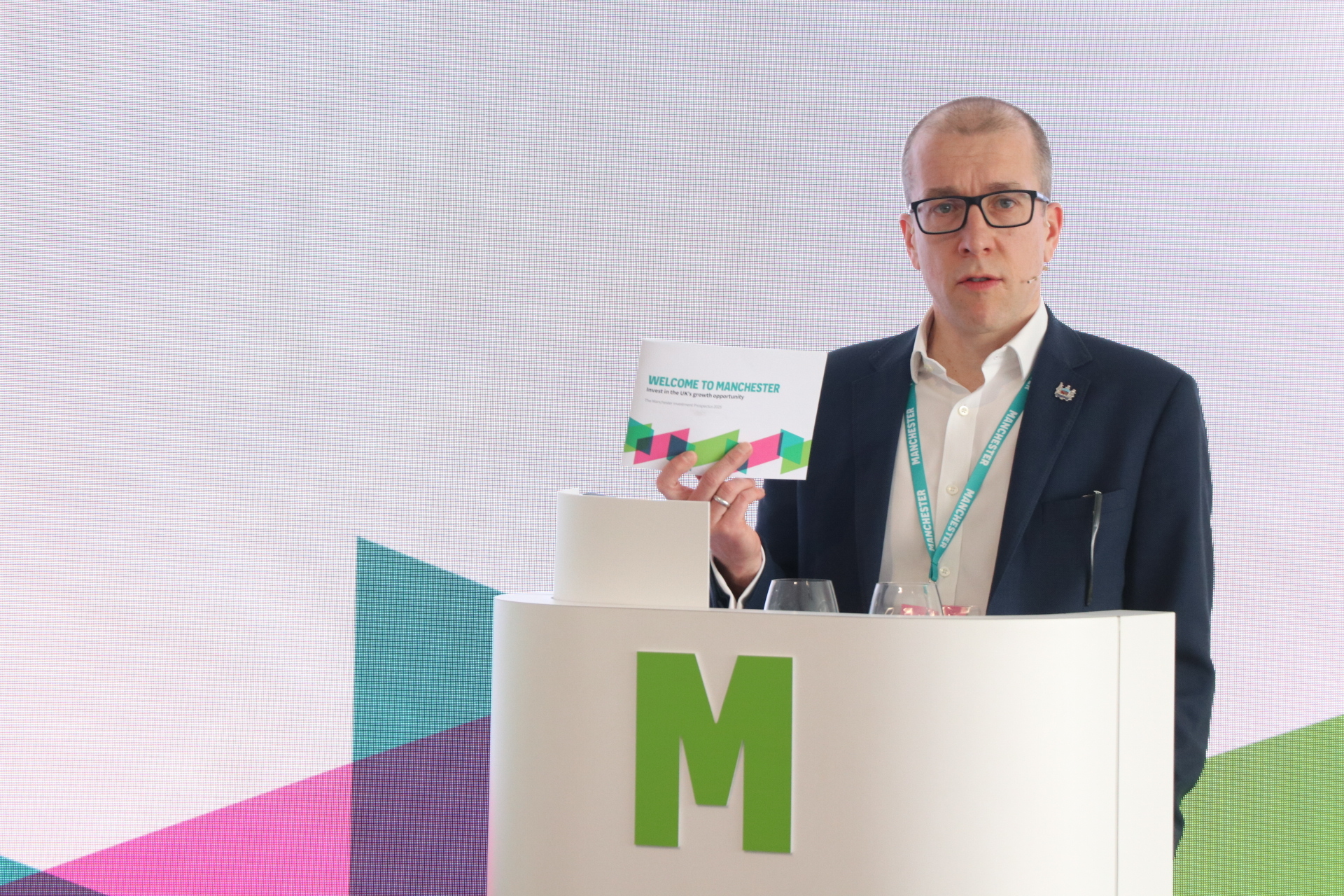
Tom Stannard commented on the strength of Manchester as an urban core. He stressed the importance of the city centre, which has been a driving force of Greater Manchester’s economy for decades in driving these growth plans forward, nodding to the strength of its business ecosystem, innovation assets and rapidly growing population. He credited Manchester being home to two of the Greater Manchester growth locations (Central Growth Cluster and Southern and Airport) with a specific focus on innovation and R&D, highlighting the strengths of the Oxford Road Corridor, Sister and MIX Manchester at the airport. He also discussed the significance of working across boundaries and geographic borders which the Growth Location scheme enable, creating greater opportunities and fueling inclusive growth across the region.
Tom Stannard said “We are the UK's growth opportunity, and we are made for investment very deliberately. The five boxes, which I think anybody who needs a calling card for GM should have reference to fastest growing economy in the UK, the FDI attractiveness, the liver ball City, home to the UK's fastest growing tech sector, but increasingly to other sectors massively important to our pipeline, particularly Life Sciences.
“The Greater Manchester message is as important as the Manchester message, and I think we all stand together, to roll with that. Our goal overall is about inclusive growth. It isn't just about building for building’s sake. It isn't just about sweating the regional centre. It is about those wider drivers of poverty and deprivation. We deliberately do not wear those on our sleeve as the marker and brand of Manchester and Greater Manchester. But let's not forget them. Let's underline them and think about how collectively we can really pull together.”
Watch the full panel session here
Place based sustainable growth: How the Manchester city region is unlocking and supporting development
To follow on from this session, attention turned to the innovative funding initiatives, frameworks and partnerships that Greater Manchester plans to use to deliver sustainable place-based investment in new communities.
Sharing their thoughts was Andrew McIntosh Director of Place at Greater Manchester Combined Authority, John Searle Strategic Director for Place at Salford City Council and Shelagh McNerney Head of Regeneration Eastern Gateway at Manchester City Council. The panel was moderated by Richard Jones Northern Cities Executive at Arcadis.
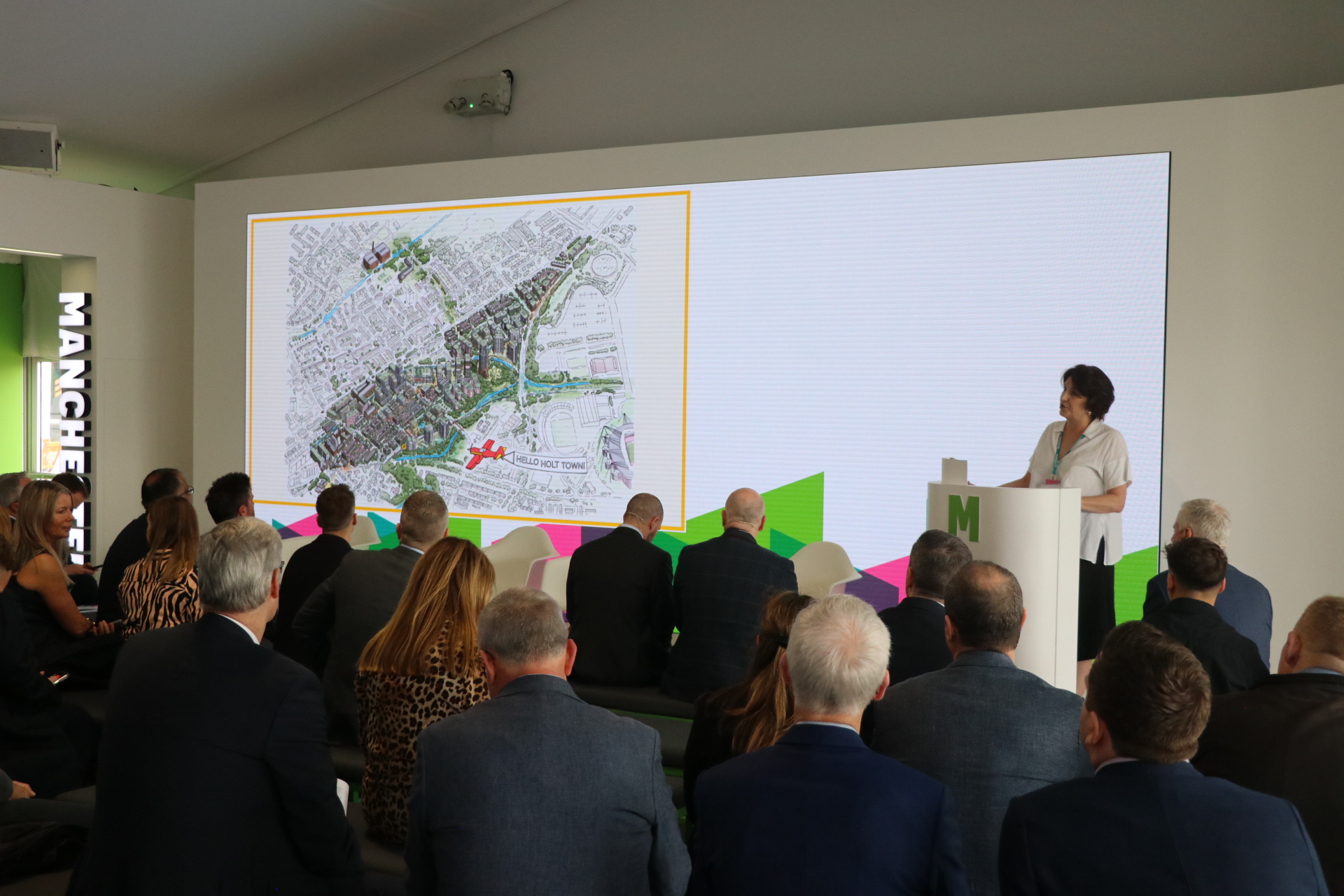
The panel discussed opportunities around the Rochdale Rail Corrridor, Holt Town, Salford’s new Strategic Regeneration Forum that was launched at MIPIM today, and the power of collaboration, long-term vision and innovative delivery methods to make these projects a success.
Shelagh McNerney began the panel by giving an introduction to Holt Town, one of Manchester’s biggest regeneration projects. The plan is to create a new town in the heart of the city, linking the popular Anocats region to the Etihad Stadium and Co-op live, while building on existing infrastructure.
Shelagh McNerney said “We have whole town at the heart of a city that has reinvented itself time and time again. It's already been stated that we never stand still. Holt town is the next big opportunity, and if you want to be part of a productive future, this is the place to be.
We want Efficient Housing typologies, contrasting densities and places where people want to live, work and play. We want safe, compact streets with a mixed population living, investing in public spaces, infrastructure and place that creates value and gives families and all generations a pride in place.
It is so important that we get the right levels of investment, not piecemeal development around the edges. Holt Town is a jigsaw puzzle in many ways, multiple stakeholders hold pieces of that future Place based partnerships here aren't just a nice to have thing. They are the only way forward in areas like Holt Town. It takes transparency so every partner knows the rules, and it takes the hard yards of negotiating, maybe compromising and staying the course.”
John Searle gave an overview of the just-launched Salford Regeneration Forum which brings together Salford City Council, Greater Manchester Combined Authority, Homes England and private sector partners Muse and Peel Land to drive forward projects at scale and pace. This more formalised approach of the Forum underpins an agreement to work proactively together, with the aim to continue that growth momentum, delivering on quality, pace and scale of regeneration.
John Searle said “It's about the public sector trying to give the private sector confidence in delivery and the long term position, trying to smooth out what you know. We need to give that confidence, give that challenge, and give that long term vision. And hopefully that's where the private sector see the value in this, they've got three key public partners sat at the table, listening, thinking about the long term infrastructure needs that are required, not just short term spot developments. Long term place making. that's what it's all about.”
On Greater Manchester Combined Authority’s role in the Salford Regeneration Forum Andrew McIntosh said “I think fundamentally, it's about how we collaborate with the local authorities to deliver their ambitions at a local level. Our role in the partnership is to help facilitate their engagement in the projects that are coming forward in place, so that we can efficiently invest in project drive up value and minimize our public subsidy. Being able to work with a team ensuring that we are open door to shape projects so that they fit in with the funding streams that are available at GM levels, means an efficient sort of design and engagement. Hopefully the combination of those two brings the funding power that that we've got available at a GM level to bear to support delivery of projects, and the wider convening partnership power that we hold as a CA to get other external third parties to work alongside us and drive forward the growth across Salford City Council.”
The panel went on to discuss other funding mechanisms and products across the region including the North West Evergreen Fund which has helped deliver 600,000 square feet of office space in the region and The Greater Manchester Housing Fund. They also addressed challenges to investment like net zero, infrastructure that are creating barriers to investment, and how a collaborative approach to placemaking across the region and the new integrated pipeline can help to overcome them.
Shelagh McNerney closed the panel saying “Manchester invented partnership, lets not forget that. The track record and the evidence is there. The challenge is all of those constraints, the need to focus investment, but I’d say we need to get going. We know it will take 10 years but there’s no need to delay the beginning of it. This is a long-term vision because we want to build the sort of places that people come to Manchester to live and work in for the rest of their lives, we don’t want a quick fix.”
Watch the full panel session here
Power to the regions: devolution and the future of urbanization
Meanwhile, Caroline Simpson, Chief Executive of Greater Manchester Combined Authority was joined the action on the Newcastle Stand for the panel session “Power to the regions: devolution and the future of urbanization” sponsored by Avison Young.
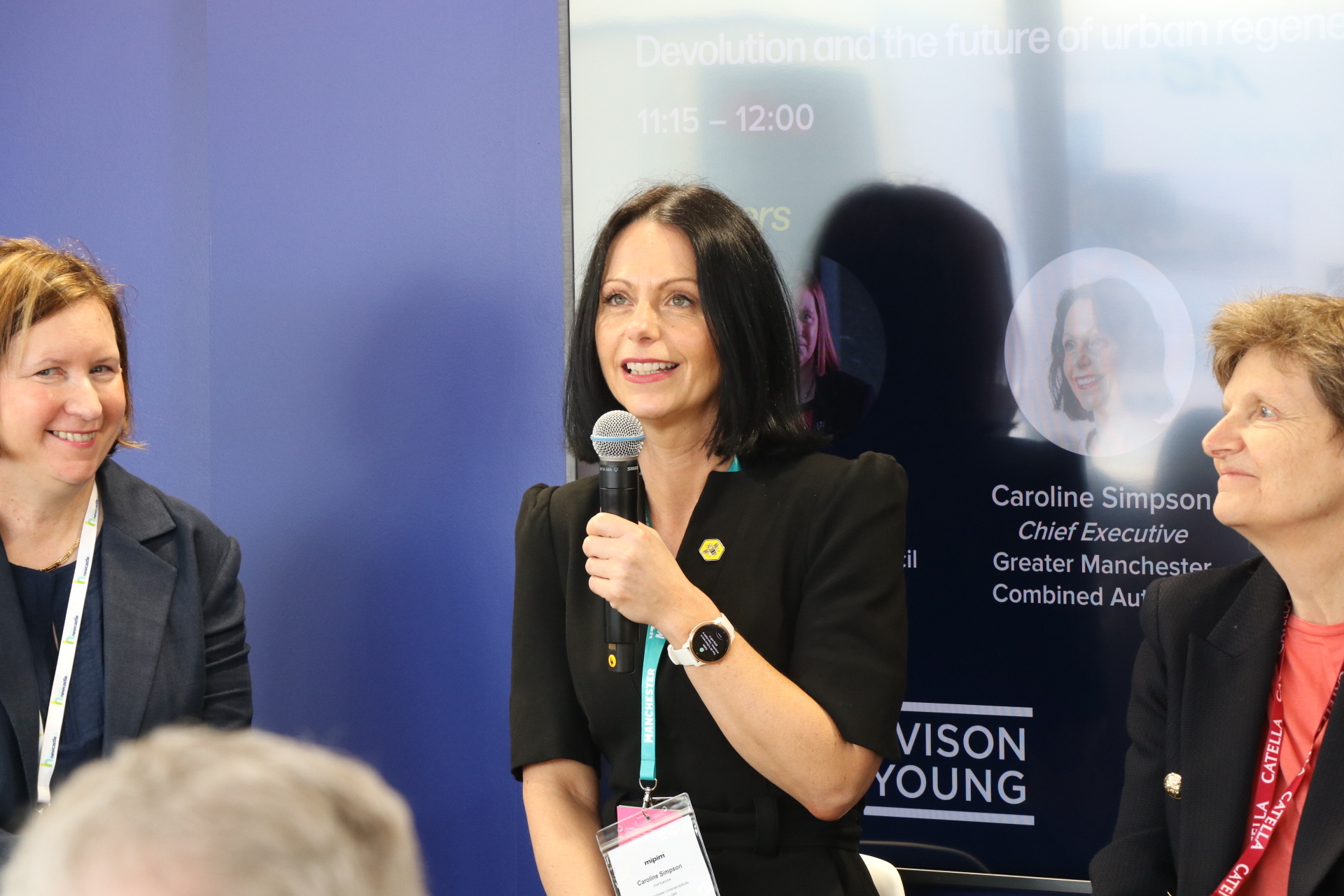
Caroline was joined by Pam Smith, Chief Executive of Newcastle City Council, Melanie Leech, Chief Executive at British Property Federation, Katherine Fairclough Chief Executive of the Liverpool City Region Combined Authority and Pat Ritchie CBE Chair of the Government Property Agency (GPA)Chair of the Government Property Agency (GPA).
This panel discussion discussed the transformative role of devolution and metro mayors in shaping the future of UK towns and cities, fueling growth across the North. They went on to talk about how public-private partnerships can unlock new opportunities for regeneration, creating vibrant places while delivering meaningful benefits for local communities.
Two cities and a river: Strangeways Strategic Regeneration Framework
In the first session of the afternoon, attention turned to the Strangeways Regeneration Framework. Salford City Council and Manchester City Council are collaborating on a joint commission to develop a Strategic Regeneration Framework (SRF) for the combined Strangeways and Cambridge area, creating a new gateway to Manchester City Centre.
The draft Strangeways and Cambridge SRF presents a high-level vision for the area, building on the work of the Operation Vulcan policing operation, to provide a platform for legitimate businesses to grow and thrive, alongside a major new urban park, significant new housing – including affordable homes – and significant commercial and employment opportunities.
Joining the discussion at MIPIM was Cllr. Gavin White Executive Member for Housing and Development at Manchester City Council, Cllr. Jack Youd Deputy City Mayor at Salford City Council, Kimberley Grieveson, Principal at Avison Youn and Linda Thiel Director, White Arkitekter. The session was moderated by
Stephen O’Malley Chief Executive of Civic.
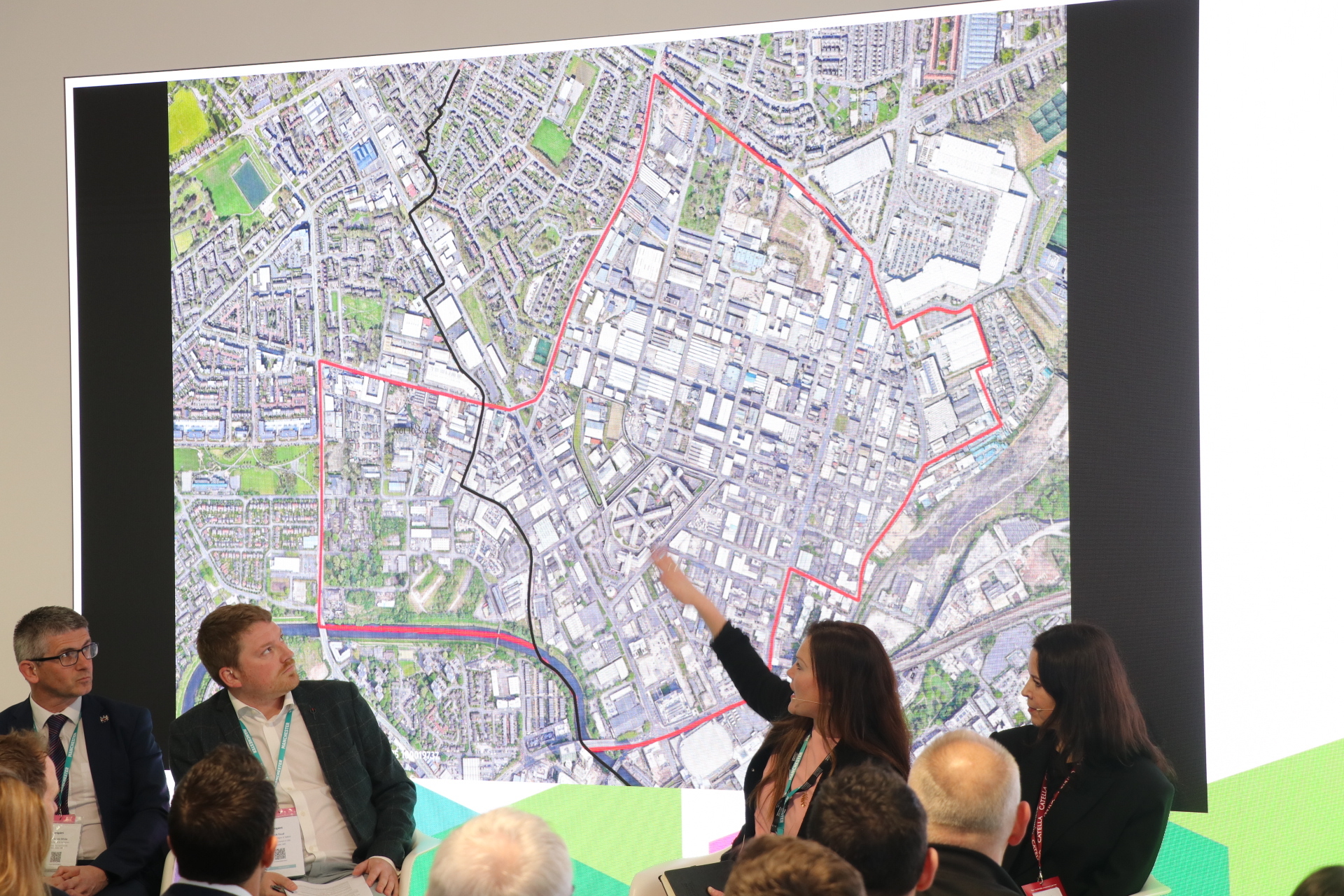
The panel discussed the huge opportunity presented by regenerating the Strangeways area of Manchester and Cambridge area of Salford, bringing together both local authorities to work collaboratively on creating a new gateway to the city. The Strangeways Regeneration Framework will see up to 7,000 homes and 3.2m sq ft of employment floorspace as well as new green spaces and a river park over 320 acres. The site has the potential to extend both cities, creaing an employment hub and new neighbourhood.
A huge focus on the panel is the role of climate change in this masterplan, using the natural environment as a flood defence and helping to build climate resilience into the masterplan to protect families and future generations. This includes a new park space and working alongside the River Irwell to protect the city as the flood risk increases.
They also discussed the challenges presented by Strangeways Prison, whether this can be relocated to allow the site to move forward as well as transport routes and the impact of the ring road’s location on pedestrian access to the city-centre.
To begin, Linda Thiel gave an overview of the Slusson area of Stockholm, which has similarities to the Strangeways project. As a key piece of Stockholm development over the last century, one of the main arteries in the city that requires a lot of infrastructure, including rail, metro, buses and boats. She explained it focuses largely on climate resilience, infrastructure and serving the existing communities and businesses.
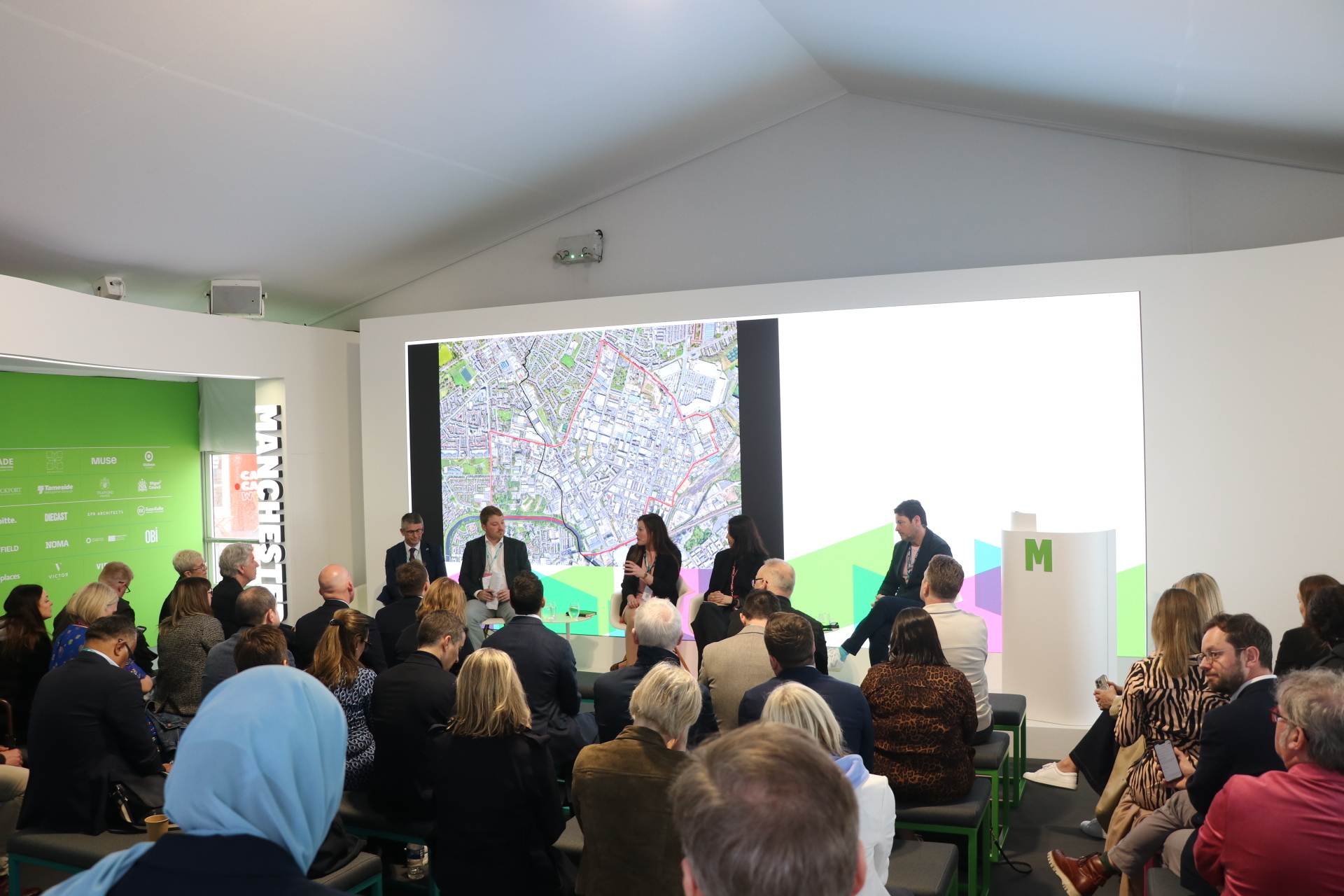
Stephen O’Malley said "What's really interesting about this particular strategic regeneration frameworis that this vision is setting a North Star, an overall direction of travel for this important and characterful and charismatic bit of Salford and Manchester. This space that's wrapped around, shaped and informed by the river Irwell and its long standing Heritage and character that's evolved over centuries, particularly around the industrial heritage and the communities that have occupied, lived, worked and thrived in this neighborhood in the past. However, it's time for a refresh and a reset for this really important part of of the city."
Kimberley Grieveson said "In terms of the vision, it’s clear this is complex and isn’t going to happen overnight. This is about setting a blueprint for change in this area, working with Salford and Manchester hand in hand and delivering a proactive response to climate change. It’s about taking a measured approach to the ambitions to deliver 7,000 homes and 3.2m sq ft of commercial space, responding to the needs of existing occupiers and allowing a range of different typologies that will support different employment offers across the piece."
On the employment opportuities created and existing businesses, Cllr. Gavin White said "The history of the area, the Jewish museum, places of worship, cultural assets and Holt’s brewery are key anchors we want to work with. There is a whole range of employment, and we want to make sure there's a hierarchy of use in the future to retain this as a key employment area as well as now a key residential area. I think there's really great opportunity for new businesses as well as existing in this area."
He continued "In the past we may have turned out back on our rivers and canals because it was too difficult to maintain them. That’s not the case now, we’ve seen with Ancoats the use of the canal to really give back to the community and Strangeways presents another opportunity to do that with the Irwell.
"We like to do bold and ambitions things in Manchester and Salford and this isn’t an easy one with the Prison, climate change and the river, but this is an area we want to invest in."
On the importance climate change, Cllr. Jack Youd said "Climate change means that we have to think differently about how we live, and it means it's important to work with the existing residents. A lot of them are very proud Salfordians, so we need to make sure we don’t break up those communities but find opportunities for them to continue to be neighbours. One of the benefits this project can bring is the regeneration of the heritage assets. Trying to find ways to protect historic Salford as well as finding ways to move people but remain neighbours is going to be the real challenge."
He continued "One of the most important things is the collaboration between Manchester, Salford and the combined authority. GMCA has really been able to create a partnership within the region that has been able to deliver on cross local authority projects."
Watch the full session here
Accommodating a new generation: Where developers and investors can help Manchester city region grow
Then in the final session of the day, Caroline Simpson Chief Executive of Greater Manchester Combined Authority was joined by Paul Richards Deputy Chief Executive, Stockport Council. Angela Mansell Managing Director, Mansell Building Solutions, Euan Kellie Founder, Euan Kellie Property Solutions and Phil Marsden Managing Director North West, Muse to discuss how developers can create thriving urban centres fit for growing populations. In the session moderated by James Riding, Chief Reporter at Inside Housing, we’ll discuss the role of towns and cities and how to create diverse, quality residential opportunities that serve communities
The panel discussed the power of collaboration between the private and public sector to drive meaningful change. Tools like devolution and MDCs to drive forward housing ambitions.
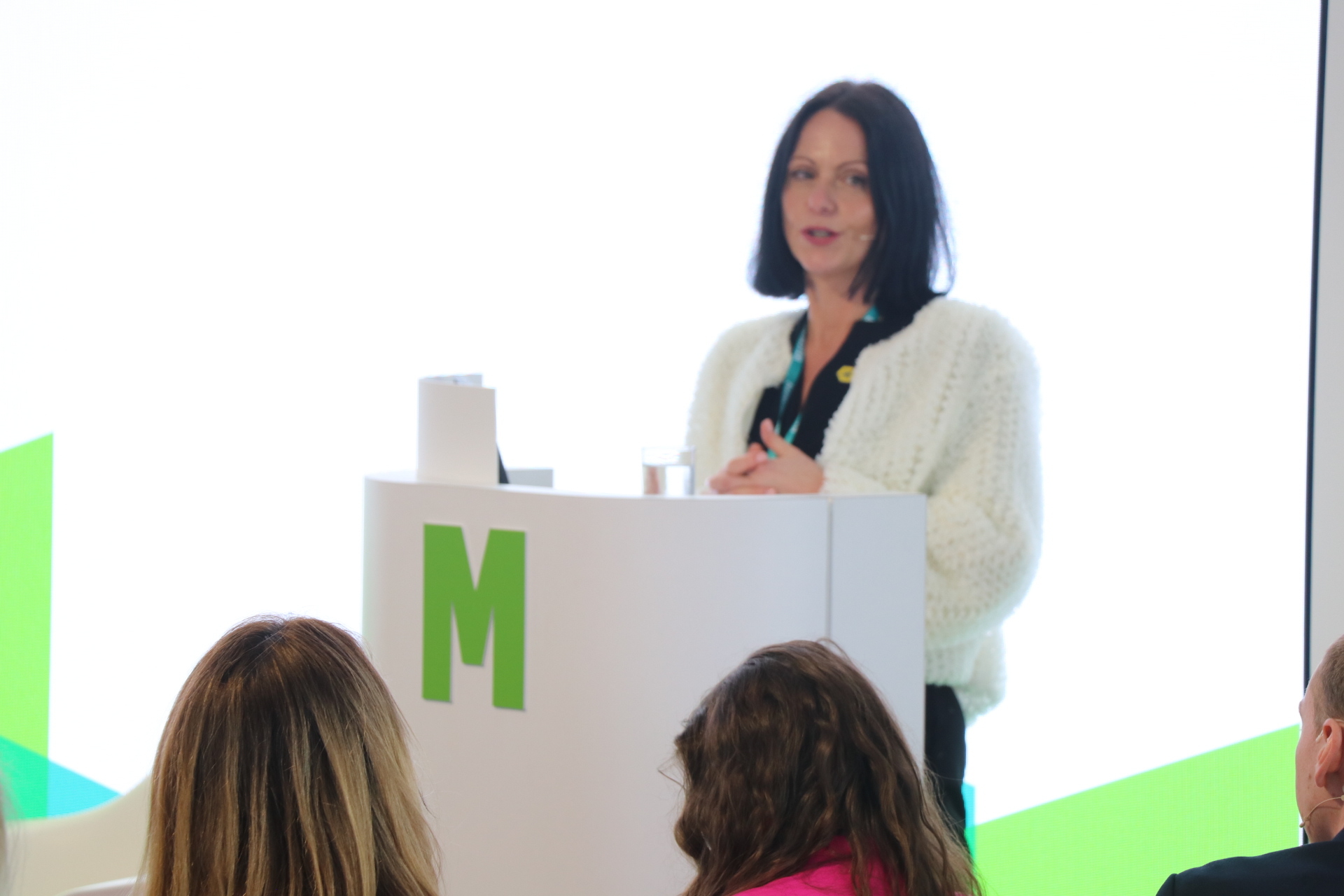
On devolution, Caroline Simpson said “I think what we have in Greater Manchester is that really clear long term, ambition and vision for our place. We take every opportunity that we can, to put all the different pieces in place, powers, delivery vehicles, new ways of of delivering things. And devolution is no different. Devolution is a means by which we can deliver the change that's needed for our our residents and our place.
"It's about how we can be creative with the funding that we have, to get the best possible outcomes. And we've got to be thinking on that scale of ambition if we're really going to set our stall out to to provide that future housing stock. It it looks like more flexibility over a longer time period that allows us to invest deeper in places to unlock regeneration."
On the power of tools like MDCs Paul Richards said “I think the the superpower that's given by having an MDC in Stockport is the concentration of effort, the single well thought out, well communicated vision. It's allowed us to draw in the best expertise from both the public and the private sector to drive that vision forward. And it it just allows a focus. It allows the public sector, be it Stockport, be it our relationship with, the combined authority, with Homes England, to to all point in the same direction. There is no blueprint for MDC. Every single one has a different purpose and being really clear about what that purpose is enables it to drive forward."
On delivering different housing solutions, Angela Mansell said "Certainly in the town centre piece, as we're already seeing in Stockport alone, you mid rise, developments are homes. The notion that the general public has that a home is a semi detached house in a field outside of town centers somewhere is not quite the future. Leading that kind of gentle density and that mid rise piece into what we're doing, ywill give you the opportunity to do is create more volume and deliver more with almost the same resource. So for Manell, it is all about caring not just what we're building but how we're building it, and making sure that opportunities from local authorities and developers actually get delivered."

Commenting on the collaborative nature of Greater Manchester, Euan Kellie said "The use of frameworks and the pre application engagement is, I think, a great, great example of how Manchester and Greater Manchester has delivered things so far. There's a fantastic phrase in the whole town framework, which I absolutely loved. And it captures everything for me about how GM does things, which is it talks about Manchester and the dual role of the local authority as planning authority, but also as the architect of collaboration. And I think that's the magic to degree where I wouldn't say it doesn't matter what the government's doing. Of course, it matters. But there's such a strong collaborative approach with all the authorities and private sector that so much good work has happened."
When asked about challenges of delivering projects outside of the city centre Phil Marsden said “We do have to talk about viability because it is a challenge that sits immediately in in front of us. Viability gaps do genuinely get bigger and the viability chance gets bigger the further you move away from the city centre. That's a sort of trend that we see. That doesn't mean development doesn't happen, it doesn't mean it doesn't progress. When we're looking at places that are further away from the city centre where there's a significant viability challenge, the pure simple maths is that the values are far outweighed by the cost.
"What we've got to do is change the market. So we've got to be bold, stick to the vision. And over time, we've seen in places like Stockport and Salford, what that then does, you build momentum and the market starts to respond and get that viability gap might not disappear, but it will come down. For me, that's the opportunity that we've got in Greater Manchester. Working in some of these towns where we can capitalise on the strength and growth of the city centre and really regenerate them over the long term. But we need partners, investors, and developers who can work with on a long term basis."
Watch the full panel session here